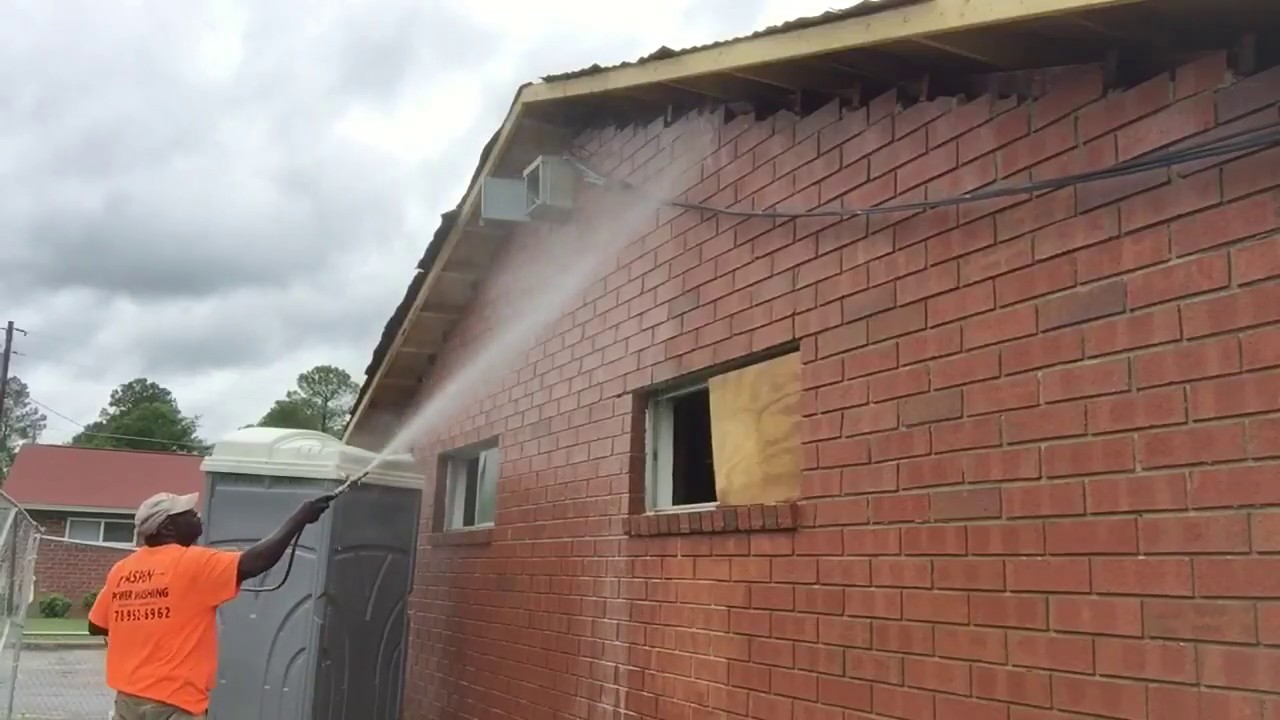
When a fire strikes, the aftermath can be devastating — not just from the flames but from the soot, smoke stains, and odors that linger long after. Even minor fires or nearby wildfires can leave behind thick residues that cling to walls, siding, decks, and driveways. That’s where power washing becomes a critical tool in the smoke damage restoration process. 🧼🚒
But is power washing always the right solution for smoke damage? What surfaces benefit from it? And what should you watch out for? This article dives into how power washing fits into fire recovery and when it works best. 🔍
🧠 Why Smoke Damage Is So Hard to Clean
Unlike typical dirt or grime, smoke damage is made of tiny, acidic particles of carbon, ash, and tar. These particles:
- Penetrate porous surfaces
- Leave oily, sticky residues
- Stain light-colored materials
- Emit strong odors
- Cause long-term corrosion if left untreated
The longer you wait to clean it, the harder it is to remove. That’s why early intervention — including pressure washing — is key. ⏳
🧼 What Power Washing Can Clean After a Fire
Power washing is ideal for exterior surfaces impacted by smoke, including:
| Surface | Why It Works |
|---|---|
| Siding (vinyl, brick, stucco) | Removes soot and smoke residue from surface pores |
| Concrete & stone patios | Cleans off ash and greasy deposits |
| Driveways & walkways | Eliminates blackened streaks and footprints |
| Decks & fences | Lifts embedded particles and clears smoke film |
| Outdoor furniture | Refreshes metal or hard plastic surfaces |
| Roofing (with soft wash) | Gentle cleaning for soot or ash without damaging shingles |
However, not every material is safe to power wash. For example, charred wood, fire-damaged insulation, or interior drywall must be handled with other restoration methods. 🚫
⚠️ Important Precautions Before You Start
Smoke restoration isn’t like regular cleaning — it requires care. Here’s what to consider before blasting away:
1. Check Structural Safety
If the fire damaged the integrity of walls, roofs, or siding, don’t pressure wash until repairs are made.
2. Use the Right Detergents
Standard cleaners won’t cut through oily soot. Look for degreasing, alkaline detergents designed for fire recovery.
3. Wear Protective Gear
Even post-fire, soot can irritate lungs and skin. Use gloves, goggles, and a mask (N95 or higher).
4. Test Surfaces First
Smoke stains on painted wood or stucco may not come out fully and could require repainting. Test a small area before cleaning the entire surface.
🧰 Equipment and Supplies You’ll Need
- Pressure washer (1,800–3,000 PSI)
- 25- or 40-degree nozzle
- Fire restoration degreaser or alkaline soap
- Soft wash attachment (for roofing or delicate areas)
- Scrub brushes
- Tarps or plastic sheeting
- Respirator and PPE
🧪 Tip: Always follow the detergent’s instructions for dwell time and dilution. Never mix bleach with degreasers!
Browse Amazon Here For Top Rated Power Washers And Accessories
🔧 How to Power Wash Smoke-Stained Exteriors
1. Pre-Wet the Area
This prevents detergent from soaking too deeply into porous surfaces and makes the cleaning more even.
2. Apply Cleaner
Use a chemical injector or pump sprayer to apply your fire-specific detergent. Let it sit for 10–15 minutes without drying.
3. Scrub if Necessary
For tough soot, use a brush to agitate the surface before rinsing. Focus on horizontal ledges where soot tends to settle.
4. Rinse with Medium Pressure
Use your pressure washer to rinse from the bottom up (to avoid streaking) and then do a top-down rinse. Repeat as needed.
5. Deodorize if Needed
Power washing won’t remove all smoke odor. Use odor-neutralizing sprays formulated for fire damage on affected surfaces afterward.
🧱 Materials to Avoid Power Washing
Not all smoke-damaged materials can withstand a pressure washer:
- Charred wood: Brittle and fragile — needs sanding or replacement
- Soot-covered windows: Can scratch if pressure washed
- Burnt insulation or drywall: Must be removed and replaced
- Electronics or HVAC units: Should be professionally inspected and cleaned
When in doubt, call a fire restoration pro. 🧯
🌿 Environmental and Safety Considerations
Fire residue is hazardous. Always:
- Collect and dispose of rinse water properly
- Block storm drains to prevent chemical runoff
- Use biodegradable, non-toxic cleaners when possible
- Alert nearby neighbors if washing a smoke-damaged building
Safety and compliance with local regulations are critical during restoration work. 🌎⚖️
Browse Amazon Here For Biodegradable Pressure Washing Detergents
🧑🔧 When to Hire a Professional
You should hire a professional pressure washing service if:
- The building is multi-story or hard to access
- There’s significant soot buildup
- You’re dealing with delicate siding, historic buildings, or roofing
- Odor removal and full remediation are required
Professionals have access to commercial-grade cleaners, soft wash systems, and restoration certifications to ensure safe, effective results.
🧼 Final Thoughts
Power washing is one of the most effective tools for removing visible smoke damage from a building’s exterior. It won’t fix every issue on its own, but when used correctly, it can restore the look and safety of your property quickly.
If your home or business has been impacted by fire, power washing can be a critical first step in the path to recovery — giving your space a fresh start after disaster. 🔧💧
Browse Amazon Here For Top Rated Power Washers And Accessories



